Assessing and monitoring industry credit risk is a critical component of managing portfolio risk.
Credit Benchmark Industry Schema
In addition to their internal ratings, banks also include their internal industry classifications for each entity. Credit Benchmark has developed an industry schema into which the banks’ industry categories are mapped.
The Credit Benchmark industry schema provides a hierarchical taxonomy going from broad categorisations (such as the Industry or Super Sector) down to the most granular one (Sub Sector).
To illustrate this, a portion of the hierarchy for Corporate Industrials is shown.
For example, Trucking (Sub Sector) is a more granular segment within Industrial Transportation (Sector), which is more granular than Industrial Goods & Services (Super Sector), which itself is a more granular categorisation of Industrials (Industry). Industrials falls within the wider classification of Corporates (Entity Type).
| Entity Type | Industry | Super Sector | Sector | Sub Sector |
|---|---|---|---|---|
| Corporates | Industrials | Industrial Goods & Services | Industrial Transportation | Delivery Services |
| Corporates | Industrials | Industrial Goods & Services | Industrial Transportation | Marine Transportation |
| Corporates | Industrials | Industrial Goods & Services | Industrial Transportation | Railroads |
| Corporates | Industrials | Industrial Goods & Services | Industrial Transportation | Transportation Services |
| Corporates | Industrials | Industrial Goods & Services | Industrial Transportation | Trucking |
Banks use a range of different industry classifications for internal purposes. Some banks use international and national classifications such as NAICS, SIC, NACE, ANZSIC codes. Others have developed their own classifications. The use of specific national industry schemas is generally related to the main geography of the bank. For instance, a US-based bank might be more likely to use NAICS codes. Credit Benchmark has developed an internal industry classification schema broadly based on a range of national and international industry classification schemas to represent a more global view. As part of Credit Benchmark’s process for mapping entity-level data, Credit Benchmark uses the industry metadata from banks combined with external reference data to derive a consensus industry classification for each entity.
Here, 3 banks submit their internal credit rating and metadata for an entity. One bank sends a NAICS code, another a SIC code and the third one an ANZSIC code.
Credit Benchmark has developed and maintains mappings from these and other industry classifications to the common Credit Benchmark schema.
The entity is then mapped to the Credit Benchmark Sub Sector Trucking.
| Bank Contributed Code |
|---|
| NAICS 484000 |
| SIC 4213 |
| ANZSIC 4610 |
| Credit Benchmark Sub Sector |
|---|
| Trucking |
Different industries face distinct challenges, opportunities, and risk factors that can significantly impact a company’s financial health and creditworthiness. Credit risk officers use knowledge of industry-specific dynamics to manage credit risk for a portfolio of companies.
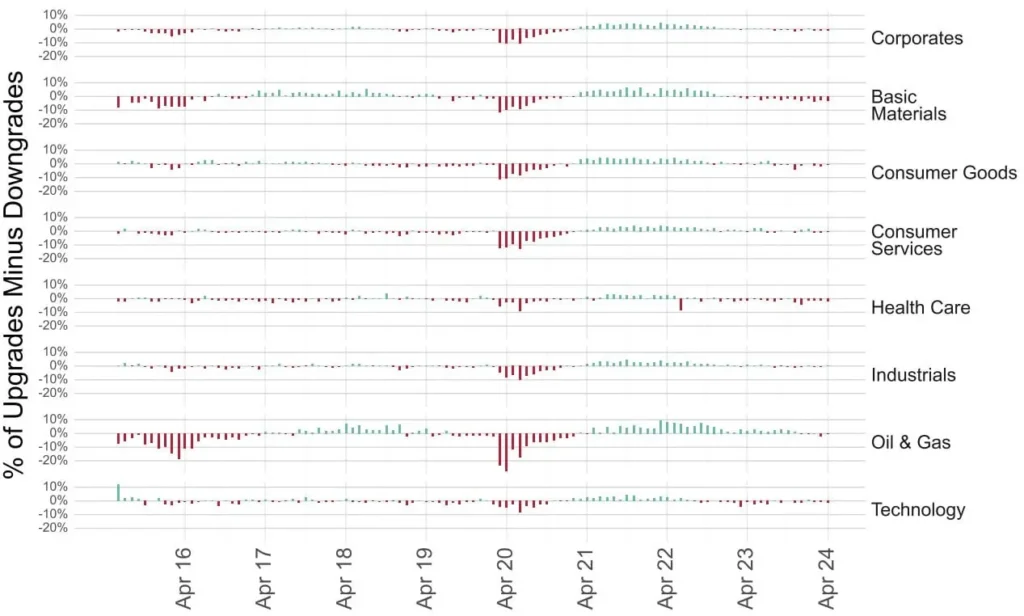
In addition, industry consensus data can be used to calculate correlations between different industries and assess concentration risk.
The below examples highlight the types of analyses that can be used to manage the risk of a portfolio.
Contact us for a free coverage check to see how these analyses can enhance your portfolio’s credit risk reporting.
Entity Type categorises entities at the highest level, with the main Entity Types being Corporates, Financials, Sovereigns, and Funds.
This analysis shows how Latin American Corporates and Financials started diverging at the start of August 2023.
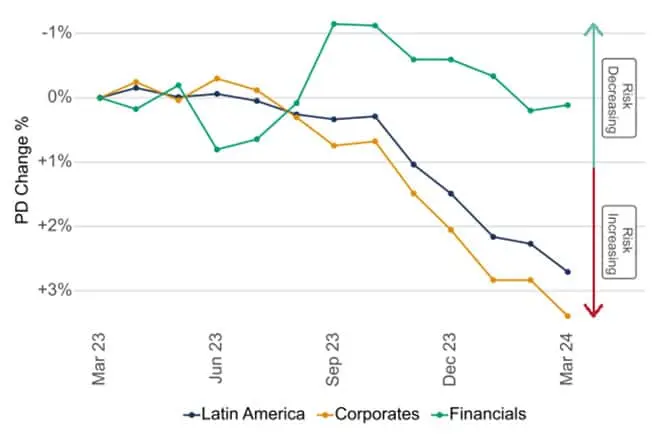
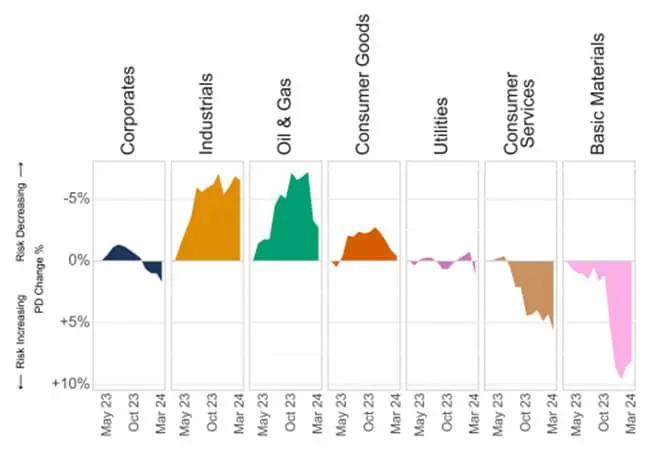
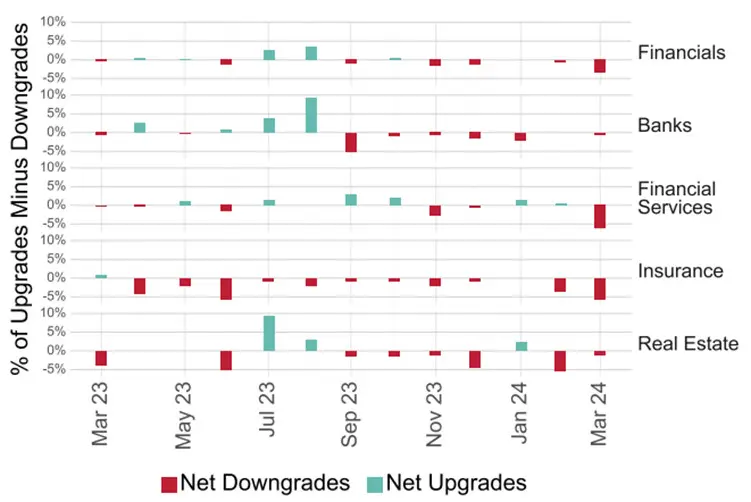
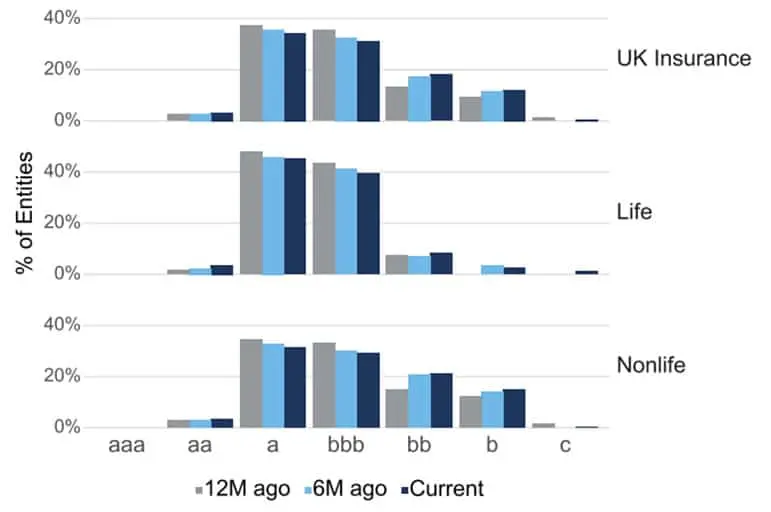
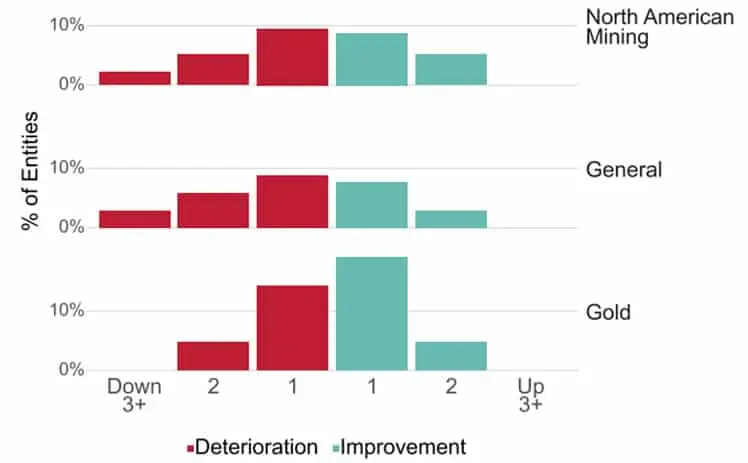
Please complete the form below to arrange a demo.